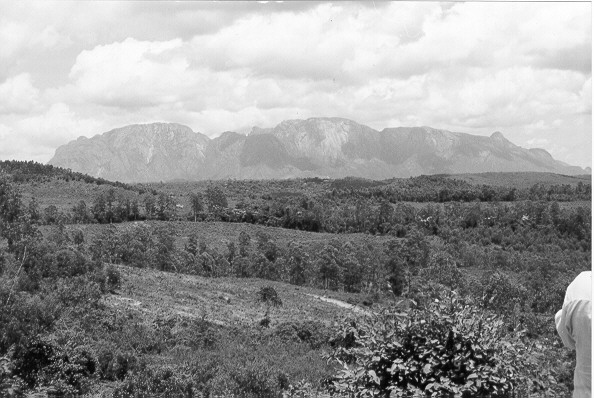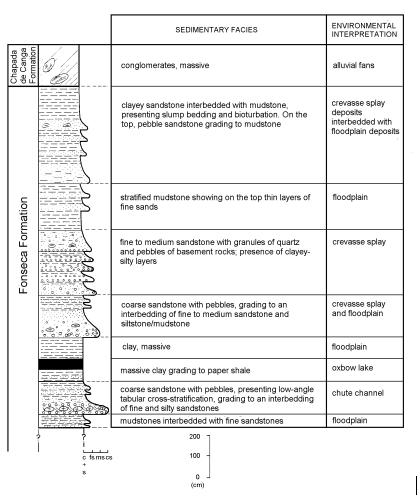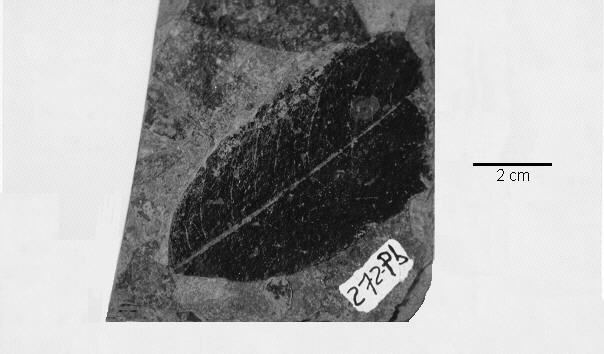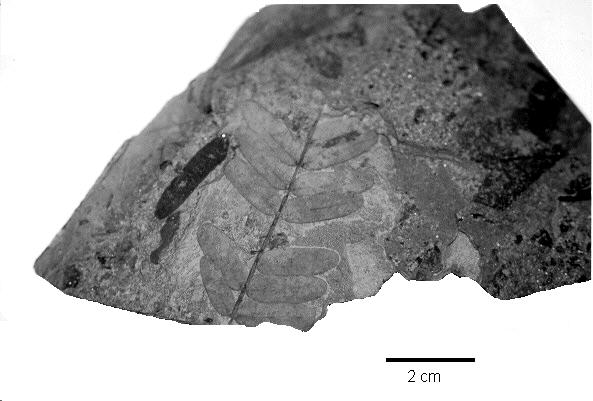
SIGEP
Geological and Paleontological
Sites of Brazil - 086
The
palaeontological site of Fonseca, Minas Gerais state, Brazil
Fossil plants of the Tertiary of Brazil
Date: 31/01/2000
Claudio Limeira Mello
(1)
limeira@igeo.ufrj.br
Lucy Gomes Sant’Anna (2)
lsantann@hotmail.com
Lílian Paglarelli Bergqvist
(1)
bergqvis@igeo.ufrj.br
(1) Departamento de Geologia -
IGEO/CCMN/UFRJ. Cidade Universitária, Ilha do Fundão.
Rio de Janeiro/RJ, Brasil. 21949-900.
(2) Departamento de Geologia Sedimentar e Ambiental - IGc/USP. Caixa Postal 11.348.
São Paulo/SP, Brasil. 05422-970.
© Mello,C.L.; Sant’Anna,L.G.; Bergqvist,L.P. 2000. The palaeontological site of Fonseca, Minas Gerais state, Brazil (Fossil plants of the Tertiary of Brazil). In: Schobbenhaus,C.; Campos,D.A.; Queiroz,E.T.; Winge,M.; Berbert-Born,M. (Edit.) Sítios Geológicos e Paleontológicos do Brasil. Published
31/1/2000 on Internet at the address http://www.unb.br/ig/sigep/sitio086/sitio086english.htm
[Actually
https://sigep.eco.br/sitio086/sitio086english.htm]
[SEE
PRINTED CHAPTER IN PORTUGUESE]
(The above bibliographic reference of author copy rights is required for any use of this article in any media, being forbidden the use for any commercial purpose)
|
Abstract
The Fonseca Basin, located at the Quadrilátero
Ferrífero region (State of Minas Gerais, Southeastern Brazil), is a classical example of
Brazilian Tertiary sediments. It has called the attention of several researchers since the
second half of the 19th century for its deposits of "canga", lignite
and fossiliferous sediments. The main lithotypes consist of sandy and clayey sediments of
the Fonseca Formation, probably dated as Eocene. The ironstone pebble conglomerates
("canga") of the Chapada de Canga Formation cover them. The Fonseca Formation is
a very fossiliferous deposit. A great amount of leaves and branches of Angiospermae,
mainly from the families Melastomatacea and Mimosacea, have been recovered. The most
spectacular fossil ever recovered in the Fonseca Formation belongs to the Family
Bombacacea - an almost complete flower with impressions of the petals and the male
reproductive organ. It represents the first record of a flower in the Cenozoic of Brazil.
Introduction
The small sedimentary basin of Fonseca is located at the
Quadrilátero Ferrífero region, state of Minas Gerais, and represents a classical example
of Tertiary sediments in Brazil. It is recognized as an important Brazilian
paleontological site. Since the first studies of Gorceix (1876, 1884), several researchers
have admitted the importance of this basin for the knowledge of the Paleogene flora of
Brazil.
The geological and paleontological interest in the Fonseca Basin
has economical and scientific reasons due to the "canga" and lignite deposits,
which were occasionally explored. The lignite deposits preserve an unusual richness of
fossil plants, an evidence of luxurious vegetation during its deposition (Gorceix, 1884;
Lima & Salard-Cheboldaeff, 1981). Besides, Tertiary floras of tropical regions in the
South Hemisphere are especially important to the study of Angiospermae dispersion and its
migration to the northern region (Duarte, 1956).
Location
The Fonseca Basin is located at the eastern boundary of the
Quadrilátero Ferrífero, in the central-eastern part of the State of Minas Gerais, near
to the Fonseca Village, Alvinópolis city. It is situated at the eastern foothills of
Serra do Caraça (Fig. 1; Photo 1). The Fonseca Basin, as defined by Sant’Anna &
Schorscher (1997), is placed at 20º10’S and 43º20’W.
The Fonseca Basin is 107 km far from Belo
Horizonte and one can reach the basin taking the non-paved road MG-326, from the city of
Santa Bárbara to Catas Altas and Santa Rita Durão. The Fonseca Village is located about
15 km to southeast of Catas Altas and 12 km to east of Santa Rita Durão. The movement in
the area is made using non-paved secondary roads. The main roads in the area go from
Fonseca to Catas Altas and from this city to Santa Rita Durão, in the northern and
western boundaries.

Figure 1: Location of the Fonseca Basin in the Quadrilátero Ferrífero area and
geologic setting of the Fonseca Basin region: 1 - TTG Association, 2 - Rio das Velhas
Supergroup, 3 - Minas Supergroup, 4 - Espinhaço Supergroup, 5 - Fonseca Formation, 6 -
Chapada de Canga Formation. Modified from Sant’Anna & Schorscher (1997) |
Historical Overview
The Fonseca Basin has called the attention of several researchers
since the second half of 19th century, for its deposits of "canga",
lignite and fossiliferous sediments. Gorceix (1876) was the first researcher to study the
basin, describing the "canga", the sedimentary deposits and some of the fossils.
He also discussed the genesis, the probable source areas, and the age of the sediments,
which he considered as Quaternary age due to the similarities between the fossil leaves
and the extant regional vegetation. After, Gorceix (1884) discussed the lithology and the
fossiliferous contents of the fresh water Tertiary basins of Gandarela and Fonseca,
assigning to the last one a lacustrine origin and upper Miocene or Pliocene age.
 Photo 1: General view of the regional morphology in the area of the
Fonseca Basin. Notice, at the background, the Serra do Caraça and, at the foreground, the
Chapada de Canga plateau. |
Detailed works about the fossils of the Fonseca Basin were only
performed latter on, when Berry (1935) described fifteen new species of fossil plants.
Other fossil plants were characterized by Dolianiti (1949, 1950), Curvello (1955), Duarte
(1956, 1958, 1974) e Sommer & Lima (1967). Even though fossil plants are notably more
abundant, Gorceix (1976) quoted the occurrence of a fossil fish and Costa-Lima (1944)
refers to the presence of fossil insects of the Order Isoptera. The study of the
palynomorph contents was started a lot later. Based on the analysis of the pollen
contents, Lima & Salard-Cheboldaeff (1981) suggested an Eocene age for the sediments
of the Fonseca Basin.
Maxwell (1972) defined the Fonseca Formation for the area,
describing the type section near the Fonseca Village. According to this author, the unit
comprises an 86m thick succession of fluviolacustrine sandy-clayey sediments, covered by
ironstone pebble conglomerates ("canga"). The "canga" was originally
included in this unit because it was interpreted as a remnant sedimentation of the basin
border. Maxwell (1972) also presented the first geologic map of the Fonseca Basin, in
1:100.000 scale, showing the Fonseca deposits covering an area of 35 km2. In
recent stratigrafic review of the Fonseca Basin, Sant’Anna (1994) and Sant’Anna
& Schorscher (1997) recognized two stratigraphic units in the basin: Fonseca Formation
and Chapada do Canga Formation.
Site Description
Geology
The Fonseca Basin is developed over Archean rocks
of the Quadrilátero Ferrífero ("Iron Quadrangle"). These rocks belongs to the
TTG Association (Tonalite-Throndjemite-Granodiorite) of the Regional Complex of Granitic (sensu
lato) Rocks (Schorscher, 1992) and to the Rio das Velhas Supergroup (Schorscher, 1978)
– Fig. 1. Proterozoic metasedimentary rocks composed by quartzites and itabirites of
the Minas Supergroup and quartzites of the Espinhaço Supergroup (Dorr, 1969; Inda et
al., 1984) constitute the highlands that limit the area (Schorscher, 1980; Luchesi,
1991; Davies, 1993).
The most important lithologic unit of the Fonseca
Basin, as a Brazilian paleontological site, is Fonseca Formation, recently redefined by
Sant’Anna & Schorscher (1997). This unit comprises sandy, sandy-clayey (sometimes
fossiliferous and papiraceous) and clayey sediments. The most representative columnar
section of the Fonseca Formation is presented in figure 2.

Figure 2: Type section of the Fonseca Formation. Modified from Sant’Anna &
Schorscher (1997). |
The deposits of the Fonseca Formation represent a
Tertiary meandering fluvial system. It was developed over the regional Precambrian
basement during an interval of relative tectonic quietude, probably under humid climatic
conditions (Sant’Anna & Schorscher, 1997). The sandy, sandy-clayey and clayey
sediments were deposited in this sedimentary environment, showing a fining-upward pattern.
Sometimes, the clayey-sandy sediments are
fossiliferous and papiraceous. They were produced in oxbow lakes, where the low rate of
sedimentation was responsible for the preservation of the macrofossils. Organic-rich
laminated mudstones and sandstones presenting fossil remnants (fragments of branches and
leaves) are typical deposits of the Fonseca Formation. Lamination is the predominant
sedimentary structure in this unit, being well developed in the sandy-clayey and clayey
sediments. Slump bedding (atectonic convolute bedding) and bioturbation are locally
preserved in the mudstones. Sandstones show low-angle tabular cross-stratification at the
basal portion of the available exposures, and they are massive at the middle part of the
available exposures. There are not outcrops showing the basal portion of the Fonseca
Formation and its maximum thickness that can be observed at the available exposures is
equal to 20 m.
The main source areas of the sediments of the
Fonseca Formation were the Archean units of the Quadrilátero Ferrífero. The granitic
rocks of the TTG Association were the main contributor to the quartzose composition of the
sandstones and to the kaolinitic (detrital kaolinites) of the mudstones. The mafic and
ultramafic rocks of the Rio das Velhas Supergroup have also contributed to the sediment
composition.
The diagenesis of the Fonseca Formation led to
the compactation of the sediments, particularly the paper shales, and to the generation of
authigenic kaolinites with a face-to-face texture. Besides the erosion of the deposits of
the Fonseca Formation and the chemical decomposition of the pre-existing minerals,
modern-weathering processes is promoting the generation of kaolinites with a wormlike
texture.
Based on paleobotanical studies, Sommer &
Lima (1967) considered the Fonseca Formation as Miocene. Based on more recent
palynological studies, Lima & Salard-Cheboldaeff (1981) dated this unit as Eocene.
The deposits of the Fonseca Formation are
preserved in a small graben with approximately 2.2 km2. The graben is inserted
on basement rocks and is limited by NE and NW oriented, post-sedimentation normal faults
(Sant’Anna et al., 1997).
Ironstone conglomeratic deposits recover the
sediments of the Fonseca Formation and the Precambrian basement rocks. Gorceix (1876)
originally named these deposits as "canga". They occur as metric-thick tabular
bodies constituted by brown to black colored, oligomictic orthoconglomerates composed by
sub-rounded to angular pebbles and cobbles, also presenting a ferruginous clayey matrix.
The composition of the gravels is quartz, quartzite and itabirite. These deposits are
related to important regional plateaus.
Sant’Anna & Schorscher (1997) named this
ironstone conglomerates as Chapada de Canga Formation, individualizing them apart of the
geological evolution of the Fonseca Basin. Maxwell (1972) has considered these deposits on
the top of the Fonseca Formation. Sant’Anna & Schorscher (1997) do not agree with
this interpretation due to the lithologic differences, the presence of an important hiatus
and their mappeability. According to Sant’Anna & Schorscher (1997), the Chapada
de Canga Formation represents an alluvial fan system laterally associated with braided
alluvial plains, deposited under tectonic influence and semi-arid climatic conditions. The
source areas of these deposits would correspond to the ferriferous and carbonatic rocks of
the Itabira Group, Minas Supergroup. Sant’Anna et al. (1997) recognize that
the age of the Chapada de Canga Formation is still uncertain, suggesting a Tertiary or a
Quaternary age for this unit.
Paleontology
The Fonseca Basin is very rich in fossil plants. With few
exceptions, the papers about the paleoflora of this basin were restricted to morphological
description of the fossils, with special attention to the pattern of the main and
secondary venules.
A large amount of Angiospermae families are recorded on the
Fonseca Formation: Annonaceae, Bignoniaceae, Bombacaceae, Combretaceae, Euphorbiaceae,
Lauraceae, Leguminosae, Malphighiaceae, Melastomataceae, Meliaceae, Menispermaceae,
Mimosaceae, Monimiaceae, Myrsinaceae, Myrtaceae, Rutaceae, Sapindaceae, Sapotaceae,
Theaceae, Tiliaceae. The photos 2 and 3 show specimens recently collected in the Fonseca
Basin. Several of these families are present in the extant flora of the State of Minas
Gerais, especially around the Fonseca Village. Dolianiti (1950) considers it as suggestive
that the fossil forms could be precursors of the recent allies.
The families Melastomatacea and Mimosaceae are the most abundant
in the basin, but the most remarkable fossil belongs to the Family Bombacaeae - a flower,
considerably well preserved, showing the impression of the petals and the male
reproductive organ. This flower, with 3.6 cm length and five petals, is the first record
of a flower in the Cenozoic of Brazil (Duarte, 1974).
| 
Photo 2: Oxandra emygdiana, Family Annonaceae, from the
Fonseca Formation (UFRJ-DG 272 Pb). Photo by Alex Wey. |

Photo 3: Caesalpinia echinataformis, Family Leguminosae,
from the Fonseca Formation (UFRJ-DG 278Pb). Photo by Alex Wey. |
According to palynological studies of Lima &
Salard-Cheboldaeff (1981), the presence of Cicatricosisporites dorogensis, Spinizonocolpites,
Perisyncolporites and the absence of Verrucatosporites usmensis, Jandufouria
seamrogiformis, Magnastriates and pollens of Compostae are suggestive of an Eocene age
for the Fonseca Formation. Lima & Salard-Cheboldaeff (1981) noticed the absence of
dinoflagelates and acritarcs, confirming the continental origin of the Fonseca Formation
deposits, and proposing for this unit a lacustrine depositional environment, with swampy
areas. This interpretation is in agreement with the meandering fluvial system proposal of
Sant’Anna & Schosrcher (1997), where the lacustrine and swampy conditions would
be related to oxbow lakes and flooded areas. The great amount of spores of pteridophytes
is suggestive of a humid climate.
| 
Figure 3: Fossil flower from the Fonseca Formation - Eriotheca prima, Family
Bombacaceae (DGM 1436 Pb). (a) Imprint; (b) Reconstruction. (after Duarte, 1974). |
Protection rules
The paleontological site of Fonseca is known for a long time and
still represents a very promising place for geological and paleontological researches.
Nowadays, the Fonseca Formation deposits occur in an area, which
activities are oriented to industrial reforesting. The remaining outcrops are observed in
riverbeds and gullies.
Accepting a recent invitation of the Environmental Department of
the city of Alvinópolis (State of Minas Gerais), researchers of the Department of Geology
of the Federal University of Rio de Janeiro (UFRJ) carried out a fieldwork at the Fonseca
Basin, when new fossil collects were done. These collects revived the paleontological
interest in the Fonseca Formation, because of the discovery of new forms of plants and
palynomorphs (Wey et al., 1999). It is sure to say that there is a great amount of
fossil material to be collected and studied, being very wide the horizon for geological
and paleontological researches.
The Environmental Department of Alvinópolis has made plans to
create an Ecological and Paleontological Park, oriented not only to the preservation and
environmental education, but also for scientific research. This proposal is absolutely
possible to be fulfilled. However, it is first necessary: a) a careful identification and
delimitation of the areas of geological and paleontological interest; b) a controlled
deforestation in order to facilitate the accesses to the selected fossiliferous sites; c)
a controlled opening of trenches in the riverbeds and hillslopes, for geological research
and fossil collects.
References
BERRY, E. W. 1935. Tertiary plants from Brazil. Proc. Amer.
Phil., Soc., 75 (7): 565-590.
COSTA LIMA, A. 1944. Sobre dois fósseis da bacia terciária de
Fonseca (Alvinópolis-Minas Gerais). An. Acad. bras. Ciênc., 16(4): 291-292.
CURVELLO, W. S. 1955. Sobre um vegetal do linhito de Fonseca,
Minas Gerais. An. Acad. bras. Ciênc., 27 (3): 293-296.
DAVIES, H.P.K. 1993. Petrogênese e evolução
crustal precambriana da região de Bateias (Quadrícula 1:25.000 NE da folha topográfica
Catas Altas 1:50.000), Quadrilátero Ferrífero - MG. São Paulo, 265p. (Dissertação
de mestrado apresentada ao Instituto de Geociências da Universidade de São Paulo).
DOLIANITI, E. 1949. Contribuição à flora pliocênica de
Fonseca, Minas Gerais. An. Acad. bras. Ciênc., 21 (3): 239-244.
DOLIANITI, E. 1950. Contribuição à flora
pliocênica de Fonseca, Minas Gerais II. An. Acad. bras. Ciênc., 22 (3):
303-306.
DORR, J.N. 1969. Physiographic, strtigraphic and
structural development of the Quadrilátero Ferrífero, Minas Gerais, Brazil. USGS
Prof. Pap., 641-A, 110p.
DUARTE, L. 1956. Melastomataceae fósseis da bacia terciária de
Fonseca, Minas Gerais. D.N.P.M., Bol. Div. Geol. Miner, 161: 7-32.
DUARTE, L. 1958. Annonaceae fósseis da bacia terciária de
Fonseca, Minas Gerais. D.N.P.M., Bol. Div. Geol. Miner., 178: 7-33.
DUARTE, L. 1974. Sobre uma Flor de Bombacaceae,
da Bacia Terciária de Fonseca, MG. An. Acad. Bras. Ciênc., 46(3/4): 407-411.
GORCEIX, H. 1876. Note sur la roche connue
vulgairement au Brésil sous le nom de Canga, et sur le bassin d'eau douce de Fonseca
(province de Minas Geraës). Bull. Soc. Geol. France, 3(IV): 321-323.
GORCEIX, H. 1884. Bacia Terciária d'agua doce
nos arredores de Ouro Preto (Gandarela e Fonseca) Minas Geraes - Brasil. Anais da
Escola de Minas, 3: 75-92.
INDA, H.A.V.; SCHORSCHER, J.H.D.; DARDENNE, M.A.;
SCHOBBENHAUS, C.; HARALYI, N.C.E.; BRANCO, P.C.A.; RAMALHO, R. 1984. O cráton do São
Francisco e a faixa de dobramentos Araçuaí. In: SCHOBBENHAUS, C.; CAMPOS, D.A.;
DERZE, G.R.; ASMUS, H.E. (coords.), Geologia do Brasil. DNPM, Div.Geol.Mineral.,
Brasília, 501p.
LIMA, R. L. & SALARD-CHEBOLDAEFF, M. 1981. Palynologie des
Bassins de Gandarela et Fonseca (Eocene de l’etat de Minas Gerais, Bresil). Boletim
IG, Instituto de Geociências, USP, v. 12: 33-54.
LUCHESI, I. 1991. Evolução petrogenética e
metalogenética da Serra da Boa Vista, Quadrilátero Ferrífero. São Paulo, 134p.
(Dissertação de mestrado apresentada ao Instituto de Geociências da Universidade de
São Paulo).
MAXWELL, C.H. 1972. Geology and ore deposits of
the Alegria District, Minas Gerais, Brasil. USGS Prof. Pap., 341-J, 72p.
SANT’ANNA, L.G. 1994. Mineralogia das
argilas e evolução geológica da Bacia de Fonseca, Minas Gerais. São Paulo, 151p.
(Dissertação de mestrado apresentada ao Instituto de Geociências da Universidade de
São Paulo).
SANT’ANNA, L.G. & SCHORSCHER, H.D. 1997.
estratigrafia e mineralogia dos depósitos cenozóicos da região da Bacia de Fonseca,
Estado de Minas Gerais, Brasil. An. Acad. bras. Ciênc., 69(2): 211-226.
SANT’ANNA, L.G.; SCHORSCHER, H.D.;
RICCOMINI, C. 1997. Cenozoic tectonics of the Fonseca Basin region, Eastern Quadrilátero
Ferrífero, MG, Brazil. Journal of South American Earth Sciences, 10(3/4): 275-284.
SCHORSCHER, J.H.D. 1978. Komatiitos na estrutura
"Greenstone belt", Série Rio das Velhas, Quadrilátero Ferrífero, Minas
Gerais, Brasil. In: CONGRESSO BRASILEIRO DE GEOLOGIA, 30, Recife, 1978. Resumos...
Recife, SBG, p.292-293.
SCHORSCHER, J.H.D. 1980. Contribuição à
estratigrafia proterozóica do Quadrilátero Ferrífero. An. Acad. bras. Ciênc.,
52: 195.
SCHORSCHER, H.D. 1992. Arcabouço
petrográfico e evolução crustal de terrenos précambrianos do sudeste de Minas Gerais:
Quadrilátero Ferrífero, Espinhaço Meridional e Domínios Granito-Gnáissicos
adjacentes. São Paulo, v.1, 274p., v.2, 394p. (Tese de Livre-Docência apresentada ao
Instituto de Geociências da Universidade de São Paulo).
SOMMER, F. W. & LIMA, C.D. 1967. Contribuição à paleoflora
de Fonseca, Minas Gerais. Anais Acad. Bras. Ciênc., 39 (3/4): 537R-538R.
WEY, A.S.; BARROS, M.A.; DINO, R.; BERGQVIST, L.P.; MELLO, C.L.;
SILVA. R.C.B. 1999. Resultados preliminares de novos achados na bacia de Fonseca, MG
(Paleógeno): macro e microfósseis vegetais. In: CONGRESSO BRASILEIRO DE
PALEONTOLOGIA, 16, Crato, 1999. Boletim de Resumos..., Crato, SBP, p. 126-127.





